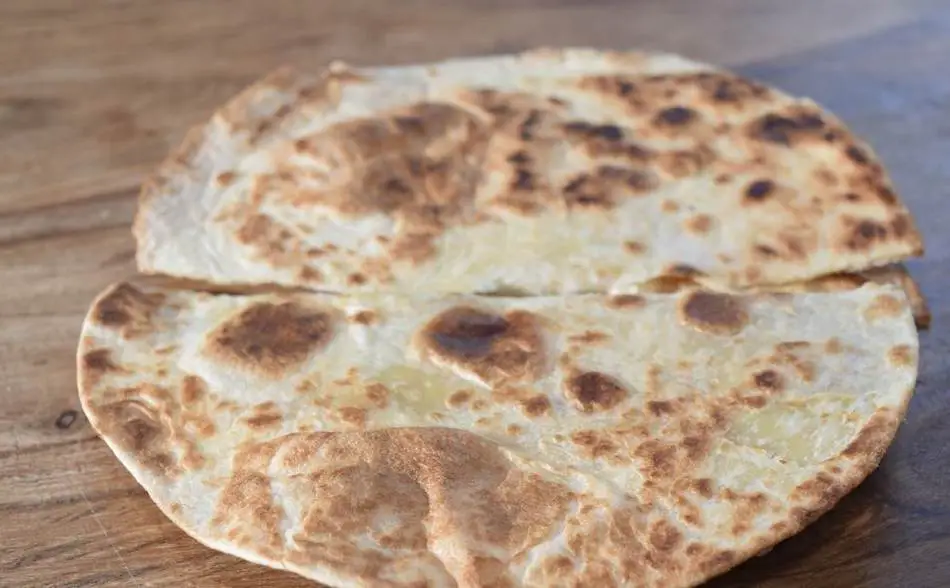
Flatbread is easy to make and is a healthy alternative to regular bread. However, hard flatbread is difficult to eat and doesn’t taste as good. But if your flatbread comes out too hard, there are easy ways to fix it and make it soft and fluffy.
The two main causes of hard flatbreads are incorrect oven temperatures and too much flour. Incorrect oven temperatures can burn the bread or dry it out when it’s cooling. Too much flour can also dry the bread out and make it too flaky and hard. The following article is an in-depth explanation of what causes flatbread to come out hard. It also includes a few tips on how to soften hard flatbread.
What Causes Hard Flatbread?
Too much flour and incorrect oven temperatures are the main causes of hard flatbread. Flour sucks moisture out of the dough, which can make it flaky and tough. Similarly, baking the bread at high temperatures can dry it out and even burn it.
The two main things that cause hard flatbread are too much flour and oven temperatures that are too high or too low. These take the majority of the moisture from flatbread dough by absorbing wet ingredients or incorrectly cooking the bread. You can’t fully get rid of these elements, but there are ways to help moderate their effects.
Go Easy On The Flour
One of the key ingredients in flatbread recipes is flour. It helps to hold all of the ingredients together and give the flatbread some structure. But adding too much into the mix can absorb the moisture from the wet ingredients in the recipe and dry out the dough. This makes the dough dry out faster when it’s getting baked, resulting in hard flatbread.
To avoid this, all you have to do is not add too much flour to the recipe. If the dough looks too dry and flaky after adding flour, then add a small amount of water at a time. This will help prevent the dough from drying out and restore some of the moisture in the dough.
Get The Temperature Right
Another thing that can make flatbread hard is baking it at the wrong temperature. You want to cook the flatbread at a medium heat, about 425°F (220° C). Cooking it at a temperature that’s too high will not only dry out the bread faster, but possibly burn it. But cooking the bread at a temperature that’s too low will cause the bread to get hard while it’s cooling.
To avoid this, all you have to do is cook the flatbread at the correct temperature for the recommended amount of time, about 10 to 15 minutes.
Cooking Flatbread In A Pan
If using a pan to make flatbread, don’t cook the bread more than 2 minutes each side. Any longer than 2 minutes, the bread will become too hard. Prior to cooking, place a griddle pan on high heat and add some cooking oil. Once the pan is hot, cook the flatbread no longer than two minutes on each side. Flip the bread with tongs once the bread becomes puffy.
How To Soften Hard Flat Bread?
If your flatbread still comes out hard, there are a few ways you can soften it. These methods include:
- Wrapping the bread in a cloth when it’s done
- Softening it in the oven
- Softening it in the microwave
Each method is fairly simple but effective.
Even if you do everything right, you can to prevent the flatbread from getting hard, it still might need to be softened up once it comes out of the oven. Fortunately, there are multiple simple but effective ways you can do so.
The first method is to wrap the bread in a clean kitchen towel once it comes out of the oven. The towel will help keep the steam inside the bread while it cools, which can help it get softer and stay soft.
If the towel method doesn’t work, then you can try softening it in the oven. While putting dry bread back into a hot oven sounds counterproductive, there are certain steps you can do beforehand to help the bread get soft. The steps are:
- Preheat the oven to a warm setting or 200°F (93°C)
- Wrap the flatbread in a damp paper towel and place it on a tray
- Put the bread in the oven for about 5 to 10 minutes.
In the Microwave
You can also do the same thing in the microwave, though the steps are a bit different. The steps are:
- Wrap the bread in a damp paper towel
- Place it on a microwave safe plate
- Microwave the bread on high for ten seconds
Make sure to keep an eye on the bread in both situations to make sure the towel doesn’t catch fire.
Final Thoughts
Hard flatbread isn’t the outcome you want, but there are ways to avoid it and fix it. Making sure there isn’t too much flour, and you bake it at the right temperature will help ensure it stays soft and fluffy when it’s done. And if it needs to be softened a bit, wrapping it in a cloth and putting it in the microwave or oven for a bit will do the trick.

